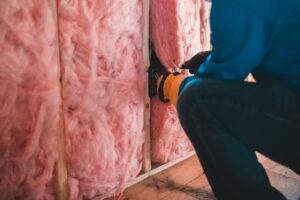Why Eco-Friendly Wood Floor Refinishing Can Keep Your Floors Looking Good for Longer

Wood floors can add warmth and beauty to any home. But over time, normal wear and tear can cause them to look dull, scratched or worn. Refinishing hardwood floors breathes new life into them while allowing you to maintain their natural beauty.
Traditional floor refinishing relies heavily on sanding, which removes some wood surface. It also utilizes chemical strippers, stains, sealers and polyurethane finishes that contain VOCs (volatile organic compounds) and can be toxic. Fortunately, there are more eco-friendly options available today. With some thoughtful choices, you can refresh your hardwood floors while minimizing your impact on the environment. When hiring a wood floor refinishing service, be sure to inquire about their use of green products and techniques for an eco-friendly result.
Why Go Green for Floor Refinishing?
There are several compelling reasons to take a greener approach to refinishing your wood floors:
- Avoid toxic fumes — Traditional refinishing products contain solvents and VOCs that can cause eye and throat irritation, dizziness, headaches and other symptoms during and after application. Green products significantly reduce exposure to these harmful chemicals.
- Improve indoor air quality — Floor refinishing products release VOCs into indoor air, which can persist for months after application. Low-VOC and zero-VOC products don’t degrade your home’s air quality. According to the EPA, indoor air is 2 to 5 times more polluted than outdoor air.
- Reduce waste — Conventional polyurethane finishes cannot be reused or recycled once mixed. Green water-based finishes use reusable containers and reduce waste. The EPA estimates over 11 million tons of architectural coating waste is generated each year.
- Protect the environment — Harmful refinishing chemicals get washed down the drain and released into the atmosphere. Using eco-friendly alternatives is a simple way to lower your environmental footprint. The EPA estimates that 17% of all VOC emissions come from architectural and maintenance coatings.
- Safeguard your health — Exposure to toxic chemicals in traditional refinishing products has been linked to cancer, organ damage, reproductive issues and other health problems. Going green avoids these risks. The European Commission on Public Health estimates that indoor air pollution results in up to 1 million healthy life years lost in Europe annually.
How to Go Green With Your Floor Refinishing Project
When refreshing your wood floors, product choice matters for an eco-friendly result. Here are some tips:
1. Lightly Sand or Avoid Sanding Completely
Aggressive sanding removes more of the wood surface than necessary, shortening floor life and generating substantial dust and debris. For light revitalization, consider lightly sanding with a fine 120-150 grit sandpaper or skip sanding altogether if possible. This works well for floors with light scratches or wear, or when simply changing colour versus removing deep stains or damage. The less you sand, the better for the planet, your indoor air quality, and preserving your flooring.
2. Use Water-Based Finishes
Water-based polyurethane finishes are excellent low-odour, low-VOC options compared to pungent traditional solvent-based products. They provide durability and stain resistance comparable to traditional polyurethane while emitting fewer harmful VOCs. Water-based finishes are also easier to apply and clean up. Be sure to follow manufacturer instructions closely when applying eco-friendly water-based finishes for best results. Allow proper drying time between coats.
3. Choose Zero-VOC Finishes
For maximum indoor air quality and chemical sensitivity avoidance, zero-VOC finishes are ideal. While they may require more frequent reapplication than standard polyurethane to maintain their protective finish, zero-VOC natural plant-based oils and waxes protect floors beautifully without off-gassing. Look for products certified for zero air emissions.
4. Consider Plant-Based Oils
Natural plant-based oils like soybean, castor, citrus, plant seed and essential oils can deeply penetrate wood pores to nourish and protect floors. Multiple thin layers of plant oils allow the natural colours, grains and character of wood floors to shine through while providing a flexible, enduring finish. They are easy to renew by applying fresh coats periodically.
5. Opt for Low-Toxic Colourants
To change or enhance the colour of your floors without the harsh chemicals found in standard stains, choose low- or no-VOC water-based, plant-based or mineral-based wood stains. Look for options with independent eco-certification. These provide vibrant, enduring colours that let the depth and texture of the natural wood show through.
6. Use Green Adhesive Removers
Eco-friendly water-based or plant-based adhesive removers eliminate old glue or carpet pad residues effectively without unhealthy chemical fumes. They are non-flammable and reusable. Look for options certified for sustainability by organizations like GreenSeal. Using green removers avoids exposing yourself and the environment to solvents.
7. Seal Before Sanding to Contain Dust
Applying a thin coat of green water-based sealer to the floors before sanding allows you to sand dust-free, as the sealer encapsulates any sanded particles. This makes cleanup much easier and more complete while protecting indoor air quality from wood dust, which can cause allergies and asthma with prolonged inhalation.
8. Rent Dust Containment Tools
Specialized vacuums and sanders with built-in dust collection systems minimize environmental cleanup while protecting those doing refinishing work from breathing dust. Look for HEPA filter vacuums and sanders capturing over 99% of sanding dust at the source. Proper dust containment is a must for eco-friendly work.
9. Dispose of Waste Safely
Leftover finishing products, rags, sanding dust and other hazardous refinishing materials and waste must be disposed of properly. Never dump them down drains or dispose of them in regular trash headed to landfills. Check local hazardous waste regulations for proper disposal guidance to protect waterways and the environment.
10. Ventilate Thoroughly After Refinishing
Allow ample drying time and ventilation for spaces after applying new finishes, even when using low-VOC and low-odour green products. Keep windows open and use fans to circulate fresh air. Thorough ventilation for several days ensures all finished odours and any lingering VOCs dissipate for healthy indoor air quality before inhabitants or pets re-enter the space.
Summary
Eco-friendly wood floor refinishing is easy and effective with the right products, tools and techniques. You can give your floors a beautifully refreshed look while protecting indoor air quality, minimizing toxic chemical use and maintaining your hardwood’s natural appeal. Follow these green strategies for a smooth revitalization process from start to finish. Your floors and the planet will thank you.





